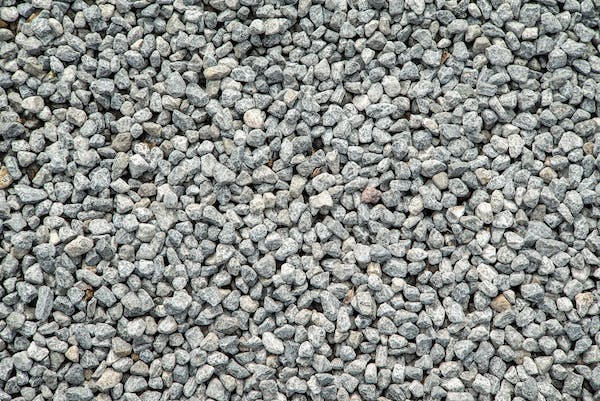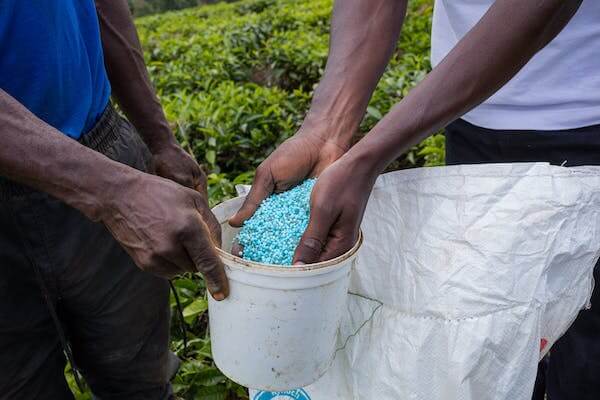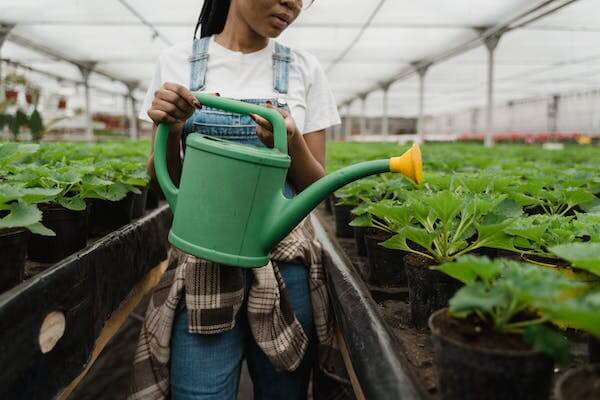Creating an herb tower garden should be a simple thing to do. At least, not with this practical and outdoor space-saving guide! You will grow various herbs in a vertical structure, thus saving space and enjoying homegrown organic herbs year-round.
To make a herb tower garden, select your frame, including a tiered planter, pot stacks, pallet boxes, and other reusable containers. Fill the medium with well-draining and nutritious soil and plant your herbs. We will teach you step-by-step how to make your tower garden. Let’s begin with the materials that you will require;
Materials For Making A Herb Tower Garden
Here are the materials that will make your herb tower garden successful;
1. Tall Container or Tower Frame
Choose a container or construct a tower frame with multiple levels or pockets for planting herbs. This could be a tiered planter, a set of stacked pots, or a custom-built vertical structure.
2. Potting Mix
Select an ideal and high-quality potting mix suitable for herbs. The potting mix includes soil;
- Peat moss or coconut coir: Any of these two mediums will provide moisture retention and aeration. Choose one based on your preference and availability.
- Perlite or vermiculite: Growers use these mediums to improve drainage and aeration, preventing soil compacting.
- Sterilized compost: The compost adds organic matter and essential nutrients. Ensure that the compost is well-rotted and free of diseases or pests.
- Granular fertilizer: This balanced, slow-release fertilizer provides nutrients over an extended period. Look for one with an N-P-K ratio around 10-10-10 or similar.
- Worm castings or well-decomposed manure: Any of these will enhance the nutrient content of the mix. Ensure that any manure that you use is well-aged to avoid burning the plants.
Here are the potting mix instructions;
- Combine equal parts of peat moss or coconut coir, perlite, or vermiculite, and sterilize compost.
- Mix in the granular fertilizer according to the package instructions. Typically, you would add a certain amount per square foot or gallon of soil.
- If you are using worm castings or well-decomposed manure, add them to the mix. These amendments provide additional organic matter and beneficial microorganisms.
- Combine all the ingredients thoroughly to ensure an even distribution of nutrients and improve the overall consistency of the mix. Ensure it provides good drainage to prevent waterlogging.
3. Herb Seeds

Choose a variety of herbs that you’d like to grow. Common choices include basil, mint, thyme, rosemary, parsley, cilantro, and oregano. When selecting the seeds, ensure that they have the following qualities;
High Germination Rate
Choose seeds with a high germination rate. This information is often indicated on the seed packet. High-quality seeds have a better chance of sprouting and developing into healthy plants.
Disease Resistant
Opt for seeds resistant to common diseases and pests. This can help reduce the likelihood of your plants succumbing to infections, leading to a more robust and productive garden.
Non-GMO And Organic Properties
Consider using non-genetically modified organisms (non-GMO) or organic seeds if you prefer to grow plants without genetically modified traits or synthetic chemicals.
Open-Pollinated Or Heirloom Varieties
Open-pollinated and heirloom seeds are generally more stable and true to type. You can save them yearly, allowing you to develop a self-sustaining seed supply.
Best Adaptability To Your Climate
Choose seeds that grow in your specific environment and conditions. Some varieties grow better in certain regions or climates, which determines success.
Short Maturity Period
Please pay attention to the “days to maturity” information on the seed packet. This helps you plan and manage your garden space efficiently, especially if you have a short growing season.
High Seed Viability
Check the seed packet for the “packed for” or “sell by” date. Fresh seeds generally have higher viability. Older kernels may still germinate, but their success rate decreases over time.
Good Seed Source Reputation
Purchase seeds from reputable sources. Established seed companies often provide better quality seeds and have a reputation for accuracy in seed labeling.
Herb Characteristics
Consider the specific traits of the plants you want to grow. Look for features such as flavor (for edible plants), flower color, size, and growth habit.
Organic Certification
If you’re committed to organic gardening, choose certified organic seeds. Organic certification ensures that the kernels do not grow in synthetic pesticides, herbicides, or fertilizers.
Container Gardening Suitability
If you’re planning to grow plants in containers, choose varieties that are well-suited for container gardening. These plants often have more compact growth habits.
Availability And Cost
Ensure that your chosen seeds are readily available and fit within your budget. Some rare or specialty seeds may be more challenging or expensive.
4. Small Stones or Gravel

Stones or gravel create a drainage layer at the bottom of your planting pockets. They help to prevent water accumulation, which can make your plants wilt.
5. Fertilizer

Fertilizer remains a major requirement in all plant growth, more so herbs. For best results, have a balanced, slow-release fertilizer or organic compost to provide nutrients to the herbs as they grow.
6. Watering Can or Drip Irrigation System

To keep your herb tower garden moist, you will need several tools. You can choose a watering can or drip irrigate your tower. Ensure you have a way to water your herb tower regularly. A drip irrigation system can be an efficient option.
Steps to Make a Herb Tower Garden

Here is the cheapest and the most straightforward way to create a herb tower garden;
1. Choose A Good Location
Step number one in gardening includes selecting a perfect location for your herbs. Like most plants, herbs thrive in full sun, so aim for at least 6-8 hours of sunlight daily. That means you must select a sunny spot in your garden for the herb tower garden.
2. Prepare the Container Or Tower Frame
If using a container, ensure it has drainage holes. Also, if you are building a tower, ensure each level has adequate drainage. Place a thin layer of stones or gravel at the bottom of each planting pocket to facilitate drainage.
3. Fill With Potting Mix
You have already prepared a potting mix. It has all the nutrients that your herbs will need. Fill each planting pocket with the potting mix, leaving enough space for the herbs to grow.
4. Plant Herbs
Plant your chosen herbs in each pocket. Follow spacing guidelines for each herb type to prevent overcrowding. You can plant plants that thrive together or make an herb tower garden of each kind.
5. Water The Herb Tower Garden
Watering the garden is essential. It should begin immediately after planting. Ensure the water drains well and doesn’t accumulate at the bottom of each pocket. Water throughout the growing period to ensure that your crop is green and vibrant.
6. Fertilize The Plants
Apply a slow-release fertilizer or incorporate organic compost into the potting mix to provide essential nutrients for the herbs.
7. Arrange Levels
If using a tiered planter, arrange the levels to create your herb tower. If using stacked pots or a custom frame, secure them stably and securely. This arrangement ensures that you optimize space for maximum harvest.
8. Plan A Watering Schedule
Establish a regular watering schedule to keep the herbs consistently moist. Adjust the frequency based on the specific water needs of each herb.
9. Monitor Your Herbs’ Growth
Regularly monitor the growth of your herbs. Pinch off all flowers that appear to encourage bushier growth and prolong the harvest.
10. Rotate The Herb Tower Garden
You can periodically rotate the tower or containers to ensure all sides receive equal sunlight. The process, though tedious, ensures that your herbs get natural light for warmth and growth.
11. Winter And Summer Care
Nothing prevents you from enjoying herbs and spices, including harsh winters and summers. If you live in such climates, consider protecting your herb tower garden from heat or frost. You can move the tower indoors during winter or provide shade during summer.
13. Harvesting
Harvest your herbs as needed. Be mindful not to harvest more than one-third of the plant at a time to allow for continued growth.
Conclusion
Ultimately, you have an all-inclusive herb tower garden DIY. You can create a functional and beautiful herb tower garden that provides fresh herbs for your culinary endeavors. The garden optimizes vertical space and maximizes harvest. Keep reading our guides for more gardening DIYs.


Thank you for every other wonderful post. Where else may anyone get that type of info in such an ideal approach of writing? I have a presentation subsequent week, and I am at the search for such information.
I’ll right away take hold of your rss feed as I can not find your e-mail subscription hyperlink or newsletter service.
Do you have any? Please allow me recognise in order that I may just subscribe.
Thanks.